Which of the graphs shown below does not represent the relationship between incident light and the electron ejected from metal surface ?
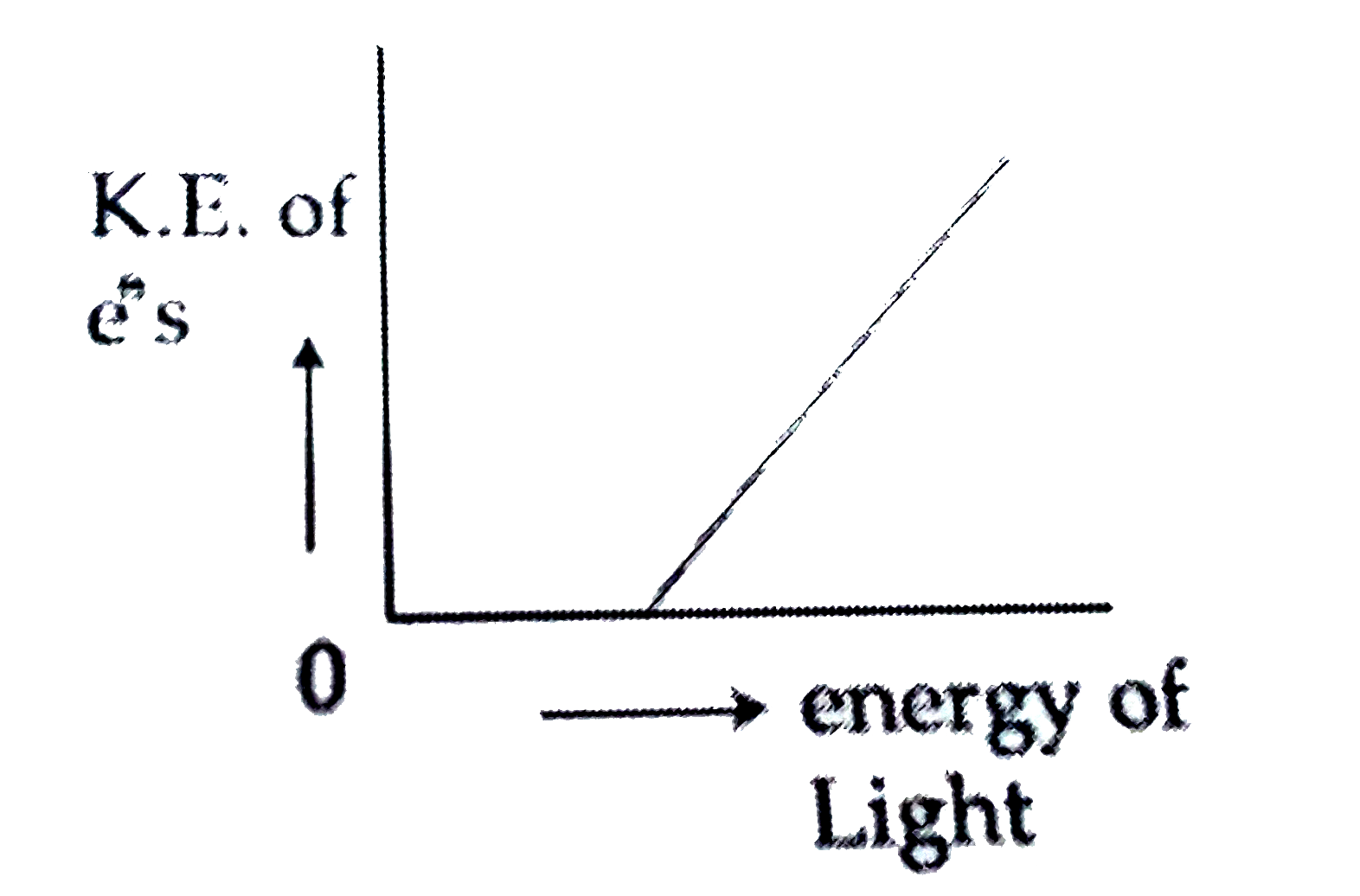

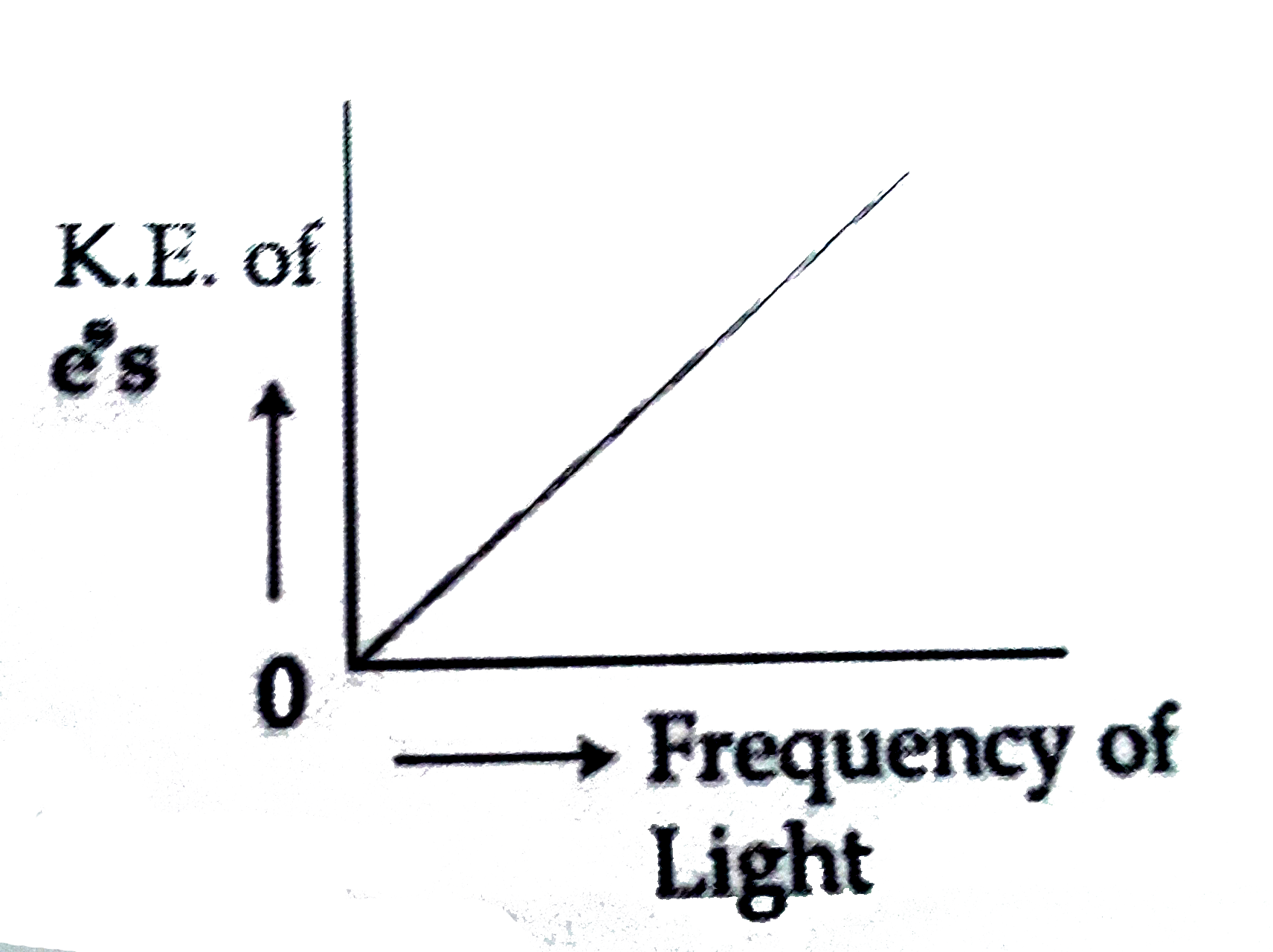
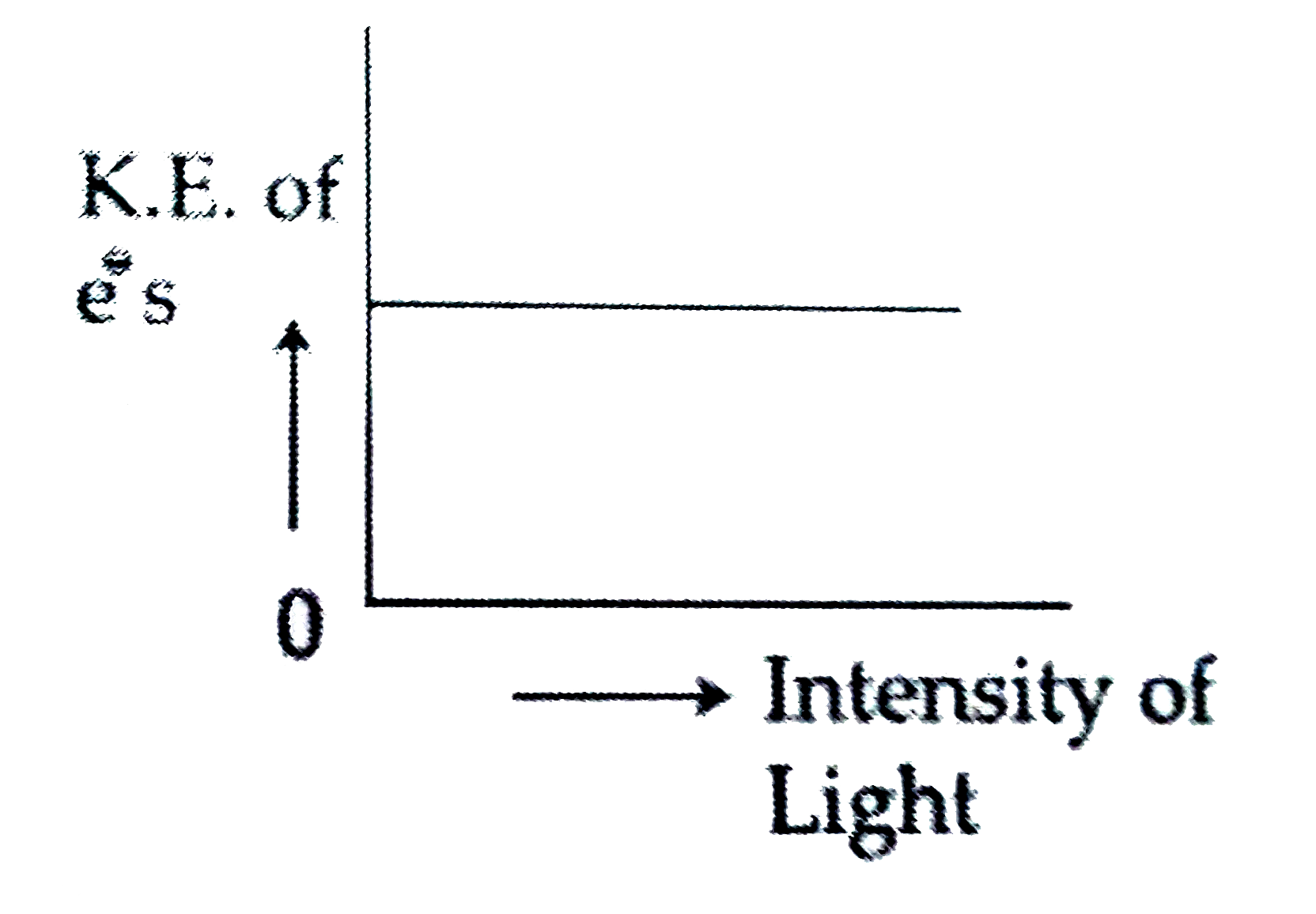
To solve the question, we need to analyze the relationships described in the graphs concerning the photoelectric effect. The photoelectric effect describes how electrons are ejected from a metal surface when light (photons) strikes it. The key points to consider are:
1. Kinetic Energy and Energy of Light: The kinetic energy (KE) of the ejected electrons is given by the equation:
KE=E−ϕ
where E is the energy of the incident light (related to frequency by E=hν) and ϕ is the work function of the metal. This relationship indicates that as the energy of light increases, the kinetic energy of the ejected electrons also increases, resulting in a linear graph with a negative intercept.
2. Number of Electrons and Frequency of Light: The number of electrons ejected depends on the intensity of the light, which is related to the number of photons hitting the surface. However, the frequency must be above a certain threshold (threshold frequency) for electrons to be emitted. After reaching this threshold, increasing frequency does not increase the number of electrons; it only increases their kinetic energy.
3. Kinetic Energy and Frequency of Light: Similar to the first point, the kinetic energy of the ejected electrons increases with frequency above the threshold frequency, resulting in a linear graph with a negative intercept.
4. Kinetic Energy and Intensity of Light: The kinetic energy of the electrons is independent of the intensity of light. Increasing intensity increases the number of photons (and thus the number of electrons), but does not affect the kinetic energy of the ejected electrons.
Now, let's analyze each graph option:
- Graph A: Kinetic Energy vs. Energy of Light - This graph is correct as it shows a linear relationship with a negative intercept.
- Graph B: Number of Electrons vs. Frequency of Light - This graph is also correct as it shows that after reaching the threshold frequency, the number of electrons remains constant regardless of further increases in frequency.
- Graph C: Kinetic Energy vs. Frequency of Light - This graph is correct as it shows a linear relationship with a negative intercept.
- Graph D: Kinetic Energy vs. Intensity of Light - This graph is incorrect because it suggests that kinetic energy varies with intensity, which contradicts the principle that kinetic energy is independent of intensity.
Thus, the graph that does not represent the relationship correctly is Graph D.
Final Answer:
Graph D does not represent the relationship between incident light and the electron ejected from the metal surface.
KE=E−ϕ
where E is the energy of the incident light (related to frequency by E=hν) and ϕ is the work function of the metal. This relationship indicates that as the energy of light increases, the kinetic energy of the ejected electrons also increases, resulting in a linear graph with a negative intercept.
- Graph B: Number of Electrons vs. Frequency of Light - This graph is also correct as it shows that after reaching the threshold frequency, the number of electrons remains constant regardless of further increases in frequency.
Graph D does not represent the relationship between incident light and the electron ejected from the metal surface.
Topper's Solved these Questions
Similar Questions
Knowledge Check
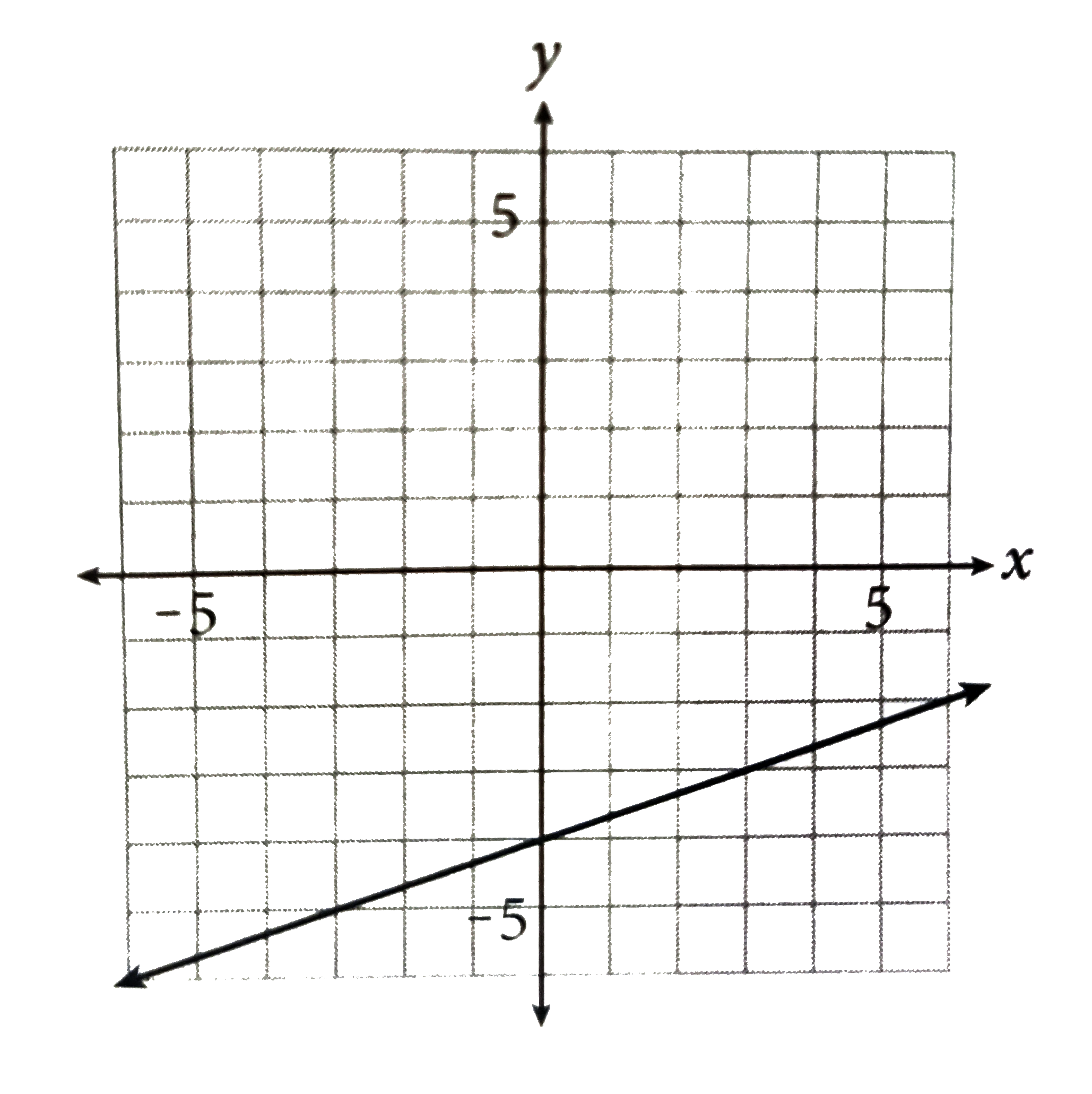
The graph shown represents which of the following equations ?Ay=−3x+4By=−13x+4Cy=13x−4Dy=3x−4Assertion : The number of electrons ejected from a metal surface depend upon the frequency of light.
Reason : There is a time lag between the striking of light beam and the ejection of electrons from the metal surface.AIf both assertion and reason are true and reason is the correct explanation of assertion.BIf both assertion and reason are true but reason is not the correct explanation of assertion.CIf assertion is true but reason is false.DIf both assertion and reason are false.
Linear relationship exists between incident light and rate of CO2 fixation at/in.
View SolutionIf λoandλ be the threshold wavelength and wavelength of incident light , the velocity of photoelectron ejected from the metal surface is :
View SolutionWhich of the following graphs represents the relationship between the force F between two point charges and the distance r between them :
View Solution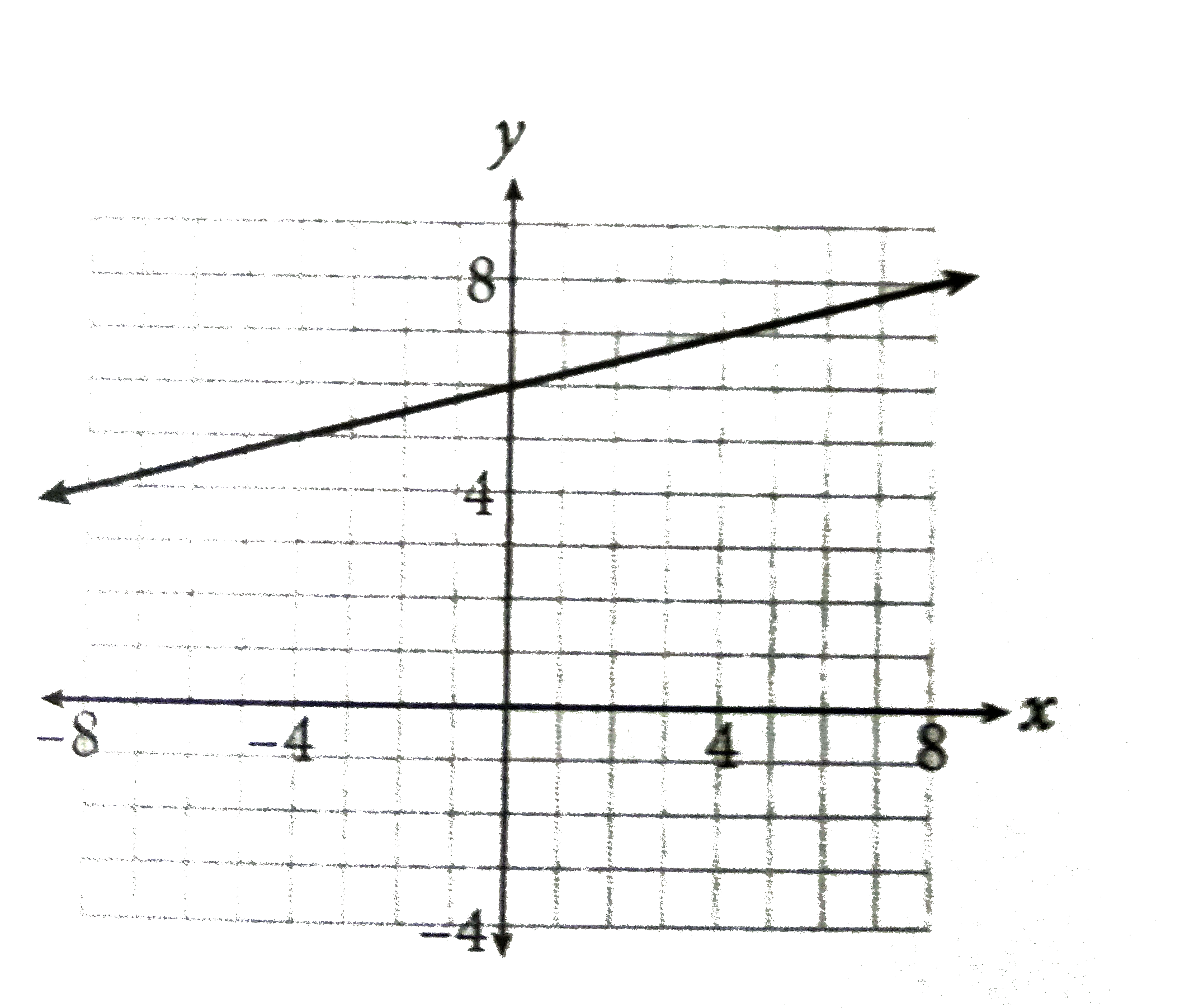
Which of the following equations represents the line shown in the graph?
View Solution
A metal surface in an evacuated tube is illuminated with monochromatic light causing the emission of photoelectrons. For a given intensity of light, a graph between saturation current and potential of the electrode is given in Fig. If the experiment were repeated with light of twice the intensity but the same wavelength, which of the graphs below would best represent the new relation between I and V?(Dotted represents initial condition)
View SolutionWhich one of the following function best represents the graphs as shown below?

View Solution
